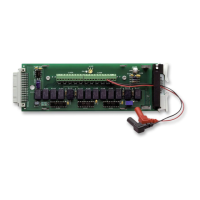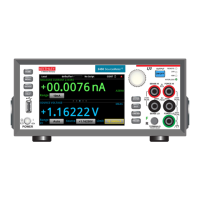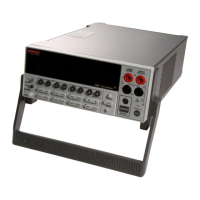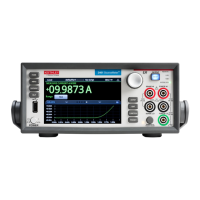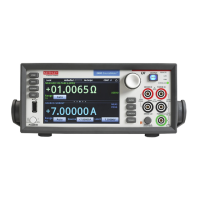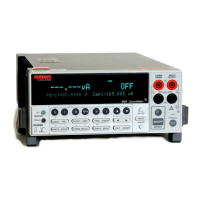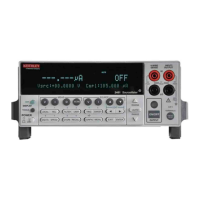Interactive SourceMeter® Instrument Reference Manual Section 8:
2450-901-01 Rev. B/September 2013 8-5
5 Where saved. Indicates where the command settings reside once they are used on an
instrument. Options include:
• Not saved: Command is not saved and must be typed each time you use it.
• Nonvolatile memory: The command is stored in a storage area in the instrument where information is
saved even when the instrument is turned off.
• Configuration script: Command is saved as part of the configuration script.
• Source configuration list: This command is stored in source configuration lists.
• Measure configuration list: This command is stored in measure configuration lists.
6 Default value: Lists the default value or constant for the command. The parameter values are
defined in the Usage or Details sections of the command description.
Command usage
The Usage section of the remote command listing shows how to properly structure the command.
Each line in the Usage section is a separate variation of the command usage; all possible command
usage options are shown here.
Figure 138: Command usage section
1 Structure of command usage: Shows how the parts of the command should be organized. If a
parameter is shown to the left of the command, it is the return when you print the command.
Information to the right are the parameters or other items you need to enter.
2 User-supplied parameters: Indicated by italics. For example, for the function
beeper.beep(duration, frequency), replace duration with the number of seconds and
frequency with the frequency of the tone. beeper.beep(2, 2400) generates a two-second,
2400 Hz tone.
Some commands have optional parameters. If there are optional parameters, they must be
entered in the order presented in the Usage section. You cannot leave out any parameters that
precede the optional parameter. Optional parameters are shown as separate lines in usage,
presented in the required order with each valid permutation of the optional parameters.
For example:
printbuffer(startIndex, endIndex, buffer1)
printbuffer(startIndex, endIndex, buffer1, buffer2)
3 Parameter value options: Descriptions of the options that are available for the user-defined
parameter.
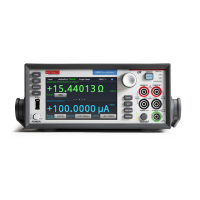
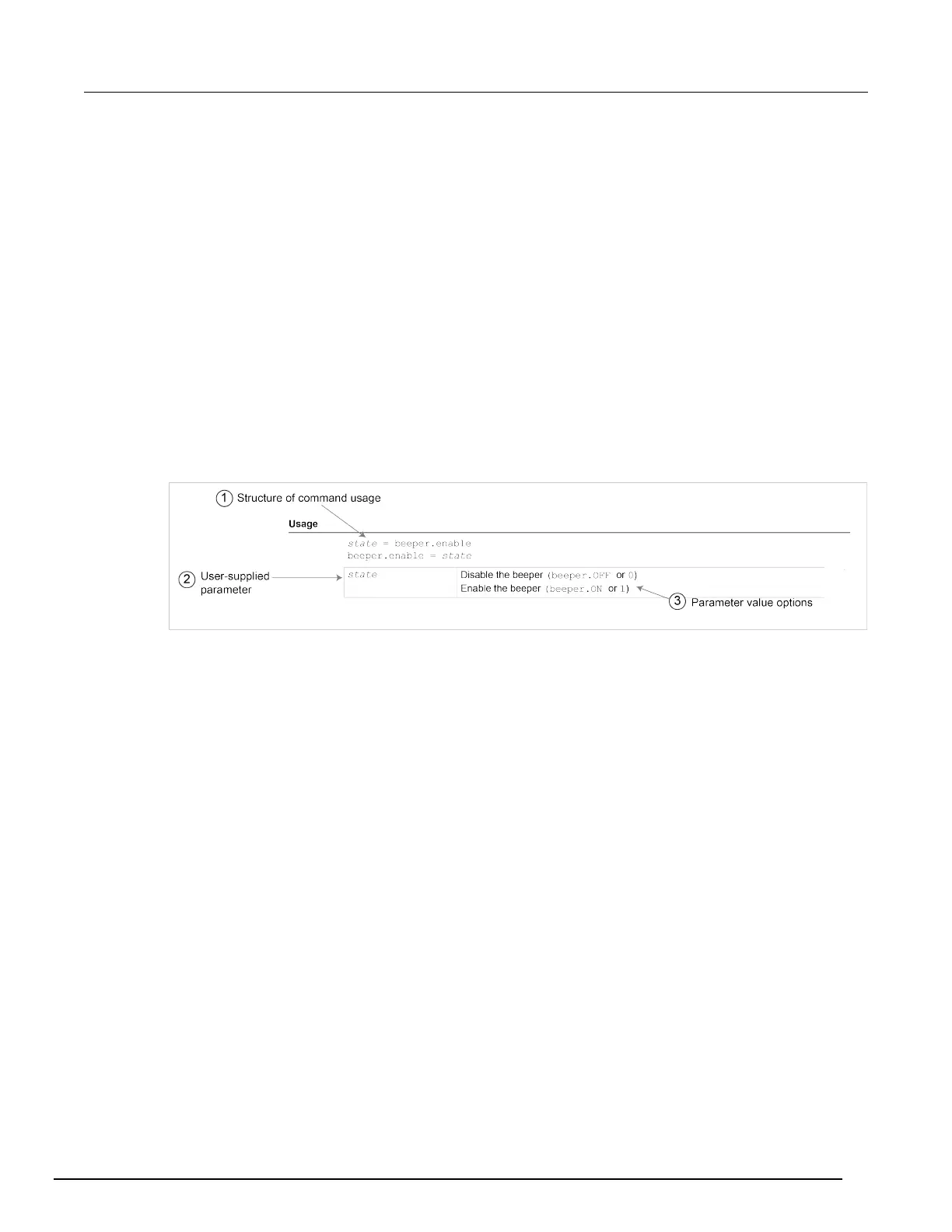